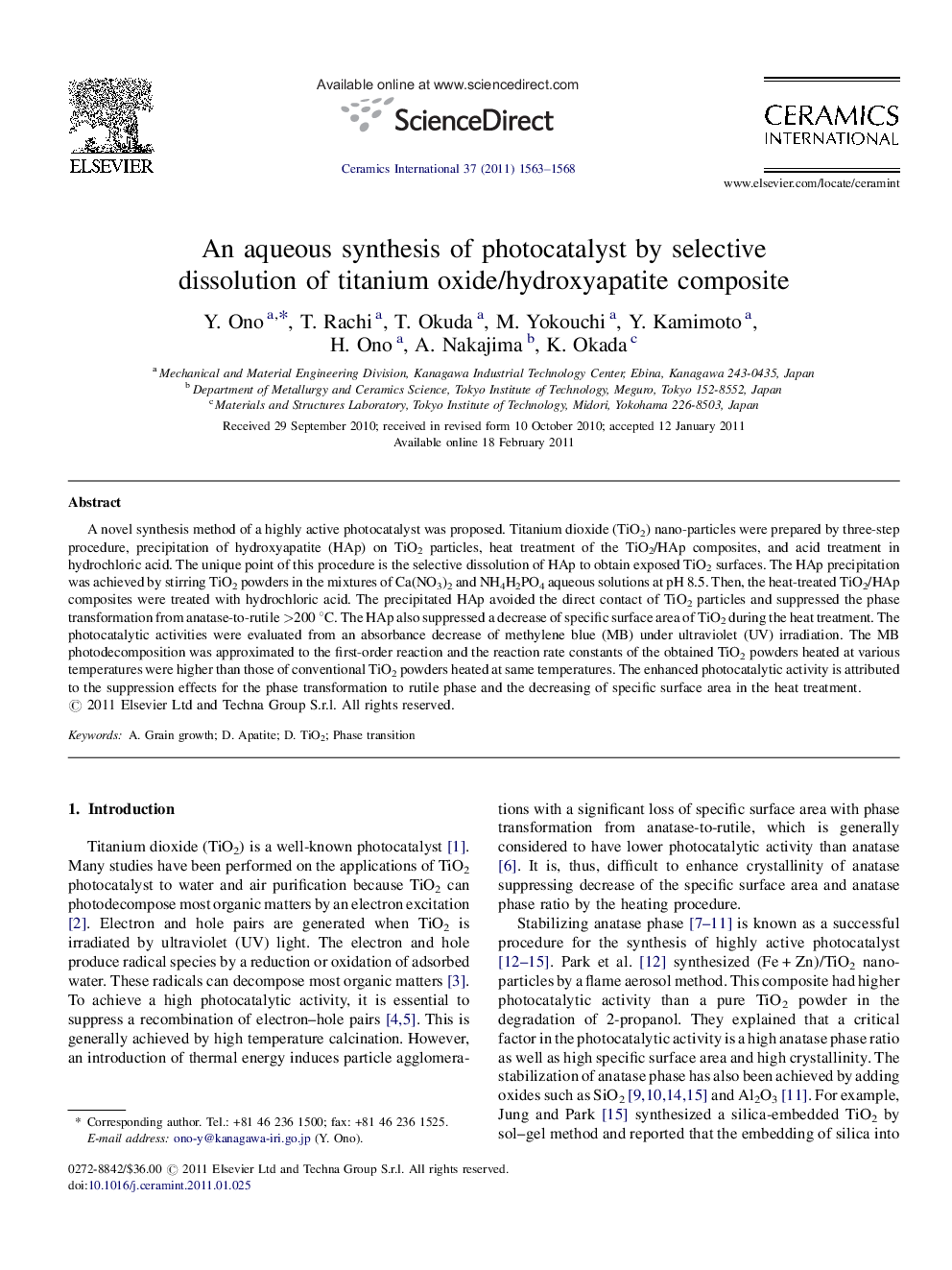| Article ID | Journal | Published Year | Pages | File Type |
|---|---|---|---|---|
| 1462342 | Ceramics International | 2011 | 6 Pages |
Abstract
A novel synthesis method of a highly active photocatalyst was proposed. Titanium dioxide (TiO2) nano-particles were prepared by three-step procedure, precipitation of hydroxyapatite (HAp) on TiO2 particles, heat treatment of the TiO2/HAp composites, and acid treatment in hydrochloric acid. The unique point of this procedure is the selective dissolution of HAp to obtain exposed TiO2 surfaces. The HAp precipitation was achieved by stirring TiO2 powders in the mixtures of Ca(NO3)2 and NH4H2PO4 aqueous solutions at pH 8.5. Then, the heat-treated TiO2/HAp composites were treated with hydrochloric acid. The precipitated HAp avoided the direct contact of TiO2 particles and suppressed the phase transformation from anatase-to-rutile >200 °C. The HAp also suppressed a decrease of specific surface area of TiO2 during the heat treatment. The photocatalytic activities were evaluated from an absorbance decrease of methylene blue (MB) under ultraviolet (UV) irradiation. The MB photodecomposition was approximated to the first-order reaction and the reaction rate constants of the obtained TiO2 powders heated at various temperatures were higher than those of conventional TiO2 powders heated at same temperatures. The enhanced photocatalytic activity is attributed to the suppression effects for the phase transformation to rutile phase and the decreasing of specific surface area in the heat treatment.
Related Topics
Physical Sciences and Engineering
Materials Science
Ceramics and Composites
Authors
Y. Ono, T. Rachi, T. Okuda, M. Yokouchi, Y. Kamimoto, H. Ono, A. Nakajima, K. Okada,
